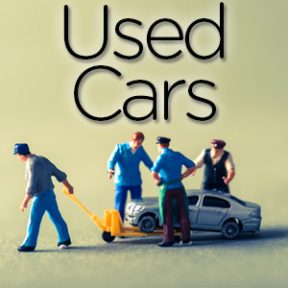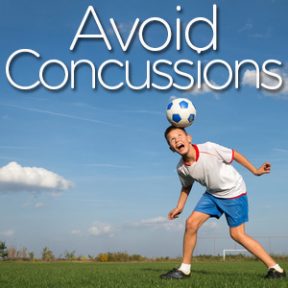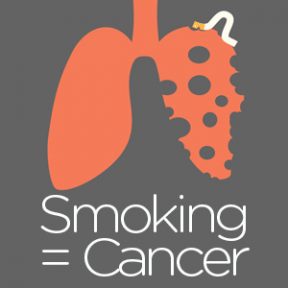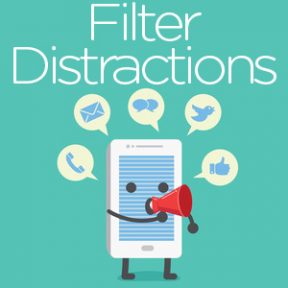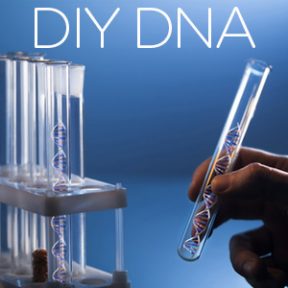 After taking the heat from the public, the College Board has finally made it easier for students with learning disabilities to get test accommodations on the SAT.
After taking the heat from the public, the College Board has finally made it easier for students with learning disabilities to get test accommodations on the SAT.
Starting January 1st, students who already receive test accommodations through an IEP or other plan will most likely receive the same for the SAT, PSAT, and AP tests.
This is a huge step in the right direction. English as a Second Language students will also receive accommodations soon.
[Source]
 After taking the heat from the public, the College Board has finally made it easier for students with learning disabilities to get test accommodations on the SAT.
After taking the heat from the public, the College Board has finally made it easier for students with learning disabilities to get test accommodations on the SAT.
Starting January 1st, students who already receive test accommodations through an IEP or other plan will most likely receive the same for the SAT, PSAT, and AP tests.
This is a huge step in the right direction. English as a Second Language students will also receive accommodations soon.
[Source]
 It’s flu season and it’s time to eat your fruits and veggies! Yup, EAT your fruits and veggies, not drink them or take them in supplements.
It’s flu season and it’s time to eat your fruits and veggies! Yup, EAT your fruits and veggies, not drink them or take them in supplements.
Just read this interesting article from NPR’s Shots Health News that promotes tossing the supplements and eating your veggies and fruits. When drinking juices, it’s difficult to determine when you’ve taken in enough nutrients and you can consume too many calories. Too many calories can cause obesity, which lowers your immune system. Oh that vicious cycle! And, yes, get your flu and pertussis shots, wash your hands, and stay away from sick people.
I actually use Clorox Wipes on door knobs, light switches, and faucets in my offices to kill germs. Okay, I know that sounds crazy but I haven’t had the flu in years!
[Source]
 Even though it can save you thousands of dollars, buying a used car can be stressful.
Even though it can save you thousands of dollars, buying a used car can be stressful.
I always wonder why the car is being sold because I don’t want to buy someone’s lemon! I just found this handy online tool that checks to see if there are any recalls on the car you’re considering buying. By submitting the car’s Vehicle Identification Number (VIN), you’ll find out if the car is missing any safety recalls over the past 15 years.
Keep this handy for the next time you need to buy a used car, or check your current cars to make sure you didn’t miss a safety recall on the cars you drive today.
[Source]
 Whether it’s a student or a co-worker sitting next to you, we all know how annoying it is to deal with their “noises” throughout the day. Does it negatively affect your performance? Absolutely.
Whether it’s a student or a co-worker sitting next to you, we all know how annoying it is to deal with their “noises” throughout the day. Does it negatively affect your performance? Absolutely.
While most students don’t have classrooms to themselves (except at Merit Academy) or offices for just one person, you need to address the noise maker so you can co-exist peacefully. We’ve all had co-workers whose voices were so loud we couldn’t think while they were talking. And in class, there’s always that annoying student who doesn’t blow their nose but sniffles every 30 seconds. Gross!
One of my students, told me that after taking the SAT, he had to cancel his scores because he couldn’t concentrate during the exam. Apparently, the student in front of him was blatantly cheating and the proctor didn’t notice. My student said that he couldn’t help himself from watching the student cheat and looking at the proctor to see why the proctor wasn’t paying attention. Even though he really needed to do well on the SAT, he couldn’t finish the sections in time with this distraction and knew he had blown the entire exam. So sad.
So how do you deal with noisy, distracting people?
First, try to relocate your desk or seating assignment to remedy the situation. If that doesn’t work, ask your teacher or supervisor to address the issue with the offender. You can also get noise cancelling headphones to drown out loud sounds as long as it isn’t in a lecture hall where you need to hear the professor. Your productivity and success depends on your ability to filter out distractions. Be proactive to create the best learning and working environment for you.
[Source]
 I was never a great athlete – probably to the dismay of my athletic father – and my daughters were never interested in any contact sports known to breed concussions. Thank goodness. I don’t even like to watch sports like boxing, football or hockey because watching people get injured and crowds of people cheering on what I consider “unsportsmanlike” behavior bothers me. Okay, I know I’m a minority in this arena but hear me out.
Just recently, I’ve talked to several high school students who have been suffered the consequences of concussions in sports such as soccer, football, and rugby. They have frequent headaches and often miss school when they have migraines. Many students notice that they can’t remember things or that it takes longer for them to learn concepts after being concussed. These are 15- and 16-year-old kids. When I heard about how their coaches pushed them and fellow teammates pressured them to keep playing, I was appalled.
Helmet sensors are proven to be inconsistent in detecting concussions, which can be dangerous, even lethal, in protecting our kids. One of my students did a project on how soccer helmets give the false sense of security, therefore, these helmets actually put players at a greater risks because they believe that they’re protected while wearing them and play harder than they would without them.
Check out this video about football concussions and helmet research. I know it’s not PC to say this but I wouldn’t recommend that any student play a contact sport that might cause a concussion. With all of the many other inevitable obstacles a child may face, why put them at risk for brain injuries that will negatively affect them for the rest of their lives? There are lots of healthy ways to play team sports (basketball, volleyball, cross country running) and get exercise (martial arts, weightlifting, dancing).
[Source]
I was never a great athlete – probably to the dismay of my athletic father – and my daughters were never interested in any contact sports known to breed concussions. Thank goodness. I don’t even like to watch sports like boxing, football or hockey because watching people get injured and crowds of people cheering on what I consider “unsportsmanlike” behavior bothers me. Okay, I know I’m a minority in this arena but hear me out.
Just recently, I’ve talked to several high school students who have been suffered the consequences of concussions in sports such as soccer, football, and rugby. They have frequent headaches and often miss school when they have migraines. Many students notice that they can’t remember things or that it takes longer for them to learn concepts after being concussed. These are 15- and 16-year-old kids. When I heard about how their coaches pushed them and fellow teammates pressured them to keep playing, I was appalled.
Helmet sensors are proven to be inconsistent in detecting concussions, which can be dangerous, even lethal, in protecting our kids. One of my students did a project on how soccer helmets give the false sense of security, therefore, these helmets actually put players at a greater risks because they believe that they’re protected while wearing them and play harder than they would without them.
Check out this video about football concussions and helmet research. I know it’s not PC to say this but I wouldn’t recommend that any student play a contact sport that might cause a concussion. With all of the many other inevitable obstacles a child may face, why put them at risk for brain injuries that will negatively affect them for the rest of their lives? There are lots of healthy ways to play team sports (basketball, volleyball, cross country running) and get exercise (martial arts, weightlifting, dancing).
[Source]
 We’ve been told that cigarettes cause lung cancer for decades, but a new gene-mapping study by Mike Stratton from Wellcome Trust Sanger Institute in Cambridge, U.K. found that people who smoke a pack of cigarettes a day (20 cigarettes) will have 150 mutations in EACH LUNG CELL every year. With over 70 known carcinogens in today’s cigarettes, smoking damages the genome and increases the risk of at least 17 classes of cancer because it damages the DNA in organs that are both directly and indirectly exposed to the smoke.
We’ve been told that cigarettes cause lung cancer for decades, but a new gene-mapping study by Mike Stratton from Wellcome Trust Sanger Institute in Cambridge, U.K. found that people who smoke a pack of cigarettes a day (20 cigarettes) will have 150 mutations in EACH LUNG CELL every year. With over 70 known carcinogens in today’s cigarettes, smoking damages the genome and increases the risk of at least 17 classes of cancer because it damages the DNA in organs that are both directly and indirectly exposed to the smoke.
Even “social smokers” who might smoke as little as 4-to-5 packs of cigarettes in their lifetime will still get several mutations in every cell in their lungs permanently – even if they stop smoking. Yikes!
Share this article with your kids so they completely understand the science behind why they shouldn’t experiment with smoking. Then show them videos of the horrors of those with cancer caused by smoking. This video shows the top 40 scariest anti-smoking commercials. It’s graphic but might be just what kids need to see in order to see the truth behind smoking.
https://www.youtube.com/watch?v=9kKN8_aa38A
Here are other videos:
https://www.youtube.com/watch?v=zcaeSKiZ37Y
https://www.youtube.com/watch?v=gwuwrRK-I2Y
[Source]
 Just read an NPR article “Learning in the Age of Digital Distraction,” that validates my claims that when students have to filter out distractions in class or while studying, they will perform at a lower level than their non-distracted counterparts. I’ve written several blogs on how our addiction to technology negatively affects our social and academic performance: There’s No Such Thing as Multi-Tasking While Studying, We Have No Privacy – NONE, The Evolution of Language Innovations: Texting and Abbreviations, and Smart Replies Are Dumb, And Here’s Why.
According to Dr. Adam Gazzaley, neurologist and professor at UCSF, students perform at their highest level (memorizing facts and information for tests) when they successfully filter out all irrelevant information and stimuli. In other words, when they’re reading a passage or listening to a lecture without any distractions, they can fully comprehend the concepts and retain them. However, if they are distracted by text messages or other notifications popping up on their phones or computer screens (irrelevant information), these distractions will degrade their brain’s ability to process the important information and their performance on tests will be much lower.
Meditation or other mindful relaxation processes can help give students the break they need from over stimulation that they receive throughout the day. While that sounds great in theory, I don’t know about you, but I have real trouble meditating. The last time I “meditated,” it felt like E T E R N I T Y as I tried to “not think” or stop creating mental lists of all of the things I’d rather be doing than meditating. Then when I opened my eyes and looked at the clock, I was disappointed that only 45 seconds had passed. Ugh.
So, instead I find that for those who can’t or won’t meditate, face-to-face meaningful engagement is the ticket. By talking with our kids about things that are important to them, or you, they learn how to filter out distractions (texts, notifications, TV shows) as you model how to handle them. Yup, that requires that you, too, learn how to filter out distractions. Show them that you don’t have to check your phone or respond to a notification while you’re engaged in this conversation. Ignore them or turn them off without reading them. Wouldn’t Miss Manners of the past have put her nose up to people who would be so rude as to have another conversation with someone during a conversation? So rather than patiently waiting while your kids respond to distractions, teach them to filter them out by modeling that behavior. It might be easier to simply turn off the distractions during the conversation to let your kids see how nice it is to have these interesting interchanges.
Just last week I had an enlightening conversation with my daughter Jaclyn. She was visiting for the weekend and we sat and talked for about 45 minutes without interruption about her long-term goals with her job, her MBA program, and buying a home. I learned more about how she was feeling and she learned about my perspective on them. During the previous week, we had texted, emailed and called one another at least 50 times to discuss dates, times, lists, and factual information. Between our crazy busy schedules we know we have about 10 seconds to communicate our thoughts before I have to go into session with a client or she has to rush off to class or work. While it’s nice to be in touch with her constantly via technology, it was such a great time to bond with her about these big decisions she’s facing in a deep conversation.
We know we can’t cut out technology – we actually need it – but we can create times where we can have long, meaningful conversations with our kids. Try starting this while driving long distances in a car or eating dinner around the dining table. Turn off the music, phones, and TVs and open up the conversation. Just once a day will give the kids a break from overstimulation and allow them to focus on something interesting. Then, create a No Music/Phone/TV Zone while they do homework, and you’ll see a marked improvement in their ability to learn and retain information. This will improve their grades at school.
[Source]
Just read an NPR article “Learning in the Age of Digital Distraction,” that validates my claims that when students have to filter out distractions in class or while studying, they will perform at a lower level than their non-distracted counterparts. I’ve written several blogs on how our addiction to technology negatively affects our social and academic performance: There’s No Such Thing as Multi-Tasking While Studying, We Have No Privacy – NONE, The Evolution of Language Innovations: Texting and Abbreviations, and Smart Replies Are Dumb, And Here’s Why.
According to Dr. Adam Gazzaley, neurologist and professor at UCSF, students perform at their highest level (memorizing facts and information for tests) when they successfully filter out all irrelevant information and stimuli. In other words, when they’re reading a passage or listening to a lecture without any distractions, they can fully comprehend the concepts and retain them. However, if they are distracted by text messages or other notifications popping up on their phones or computer screens (irrelevant information), these distractions will degrade their brain’s ability to process the important information and their performance on tests will be much lower.
Meditation or other mindful relaxation processes can help give students the break they need from over stimulation that they receive throughout the day. While that sounds great in theory, I don’t know about you, but I have real trouble meditating. The last time I “meditated,” it felt like E T E R N I T Y as I tried to “not think” or stop creating mental lists of all of the things I’d rather be doing than meditating. Then when I opened my eyes and looked at the clock, I was disappointed that only 45 seconds had passed. Ugh.
So, instead I find that for those who can’t or won’t meditate, face-to-face meaningful engagement is the ticket. By talking with our kids about things that are important to them, or you, they learn how to filter out distractions (texts, notifications, TV shows) as you model how to handle them. Yup, that requires that you, too, learn how to filter out distractions. Show them that you don’t have to check your phone or respond to a notification while you’re engaged in this conversation. Ignore them or turn them off without reading them. Wouldn’t Miss Manners of the past have put her nose up to people who would be so rude as to have another conversation with someone during a conversation? So rather than patiently waiting while your kids respond to distractions, teach them to filter them out by modeling that behavior. It might be easier to simply turn off the distractions during the conversation to let your kids see how nice it is to have these interesting interchanges.
Just last week I had an enlightening conversation with my daughter Jaclyn. She was visiting for the weekend and we sat and talked for about 45 minutes without interruption about her long-term goals with her job, her MBA program, and buying a home. I learned more about how she was feeling and she learned about my perspective on them. During the previous week, we had texted, emailed and called one another at least 50 times to discuss dates, times, lists, and factual information. Between our crazy busy schedules we know we have about 10 seconds to communicate our thoughts before I have to go into session with a client or she has to rush off to class or work. While it’s nice to be in touch with her constantly via technology, it was such a great time to bond with her about these big decisions she’s facing in a deep conversation.
We know we can’t cut out technology – we actually need it – but we can create times where we can have long, meaningful conversations with our kids. Try starting this while driving long distances in a car or eating dinner around the dining table. Turn off the music, phones, and TVs and open up the conversation. Just once a day will give the kids a break from overstimulation and allow them to focus on something interesting. Then, create a No Music/Phone/TV Zone while they do homework, and you’ll see a marked improvement in their ability to learn and retain information. This will improve their grades at school.
[Source]
 Remember when the first human genome was mapped in 2000? I took my girls to a seminar at UCSC to learn more about where the future of medicine might be heading. The Genome Bioinformatics Group at UCSC claimed to be the first to complete the genome in 2003. It was an exciting and hopeful time for the future of human DNA mapping. Nicole was selected to join a group of accelerated biology majors to study with some of this genome team. A 10th-grade Merit Academy student at the time, she loved seeing how medicine was amidst a paradigm shift and scientific breakthrough.
Remember when the first human genome was mapped in 2000? I took my girls to a seminar at UCSC to learn more about where the future of medicine might be heading. The Genome Bioinformatics Group at UCSC claimed to be the first to complete the genome in 2003. It was an exciting and hopeful time for the future of human DNA mapping. Nicole was selected to join a group of accelerated biology majors to study with some of this genome team. A 10th-grade Merit Academy student at the time, she loved seeing how medicine was amidst a paradigm shift and scientific breakthrough.
Today, I’m thrilled to see how many private companies are offering DNA test kits to the public. Just 5 years ago, I tried to get my DNA mapped but the cost was prohibitive. Now, for under a $1,000, you can get specific DNA tests to help you navigate your own health plans. Check out this article by April Long of Elle Magazine to see how a blood test can give you a snapshot about how your genetics can tell you what you can’t change, but might be able to suggest alternative treatment options.
While the Elle Magazine article focuses on DNA test results for exercise and diet decisions, there are DNA tests that focus on diseases and more serious health issues. Many people prefer not to know what their DNA may tell them about their possible health and medical issues down the road. If you’re curious like I am, this is the first step that gives individuals more control over their health.
[Source]
 This is why I am proud to be American. American innovation is what is going to get us out of the hot mess we’re mired in today.
This is why I am proud to be American. American innovation is what is going to get us out of the hot mess we’re mired in today.
A new company called Nikola just announced that they will be building a Class 8 hydrogen electric Semi Truck. To power these trucks, which are ZERO EMISSION, they are creating a hydrogen fuel cell and battery infrastructure that will span coast to coast.
The hydrogen will be produced using solar energy so it will be 100% clean, unlike hydrogen produced by steam methane reformation (oil companies). This announcement is a huge surprise, and I bet the oil companies are flipping out! Yes!
We needed to hear some good news, and the Nikola One Hydrogen Fuel Cell Semi-truck sounds like a bold step towards energy independence and CO2 reduction.
 What does it take to make climate deniers believe that we are in crisis? Over 100 MILLION trees have died in California as a result of our 5-year drought. This is unprecedented. Most of these trees are in southern and central Sierra Nevada but moving north as the drought continues.
What does it take to make climate deniers believe that we are in crisis? Over 100 MILLION trees have died in California as a result of our 5-year drought. This is unprecedented. Most of these trees are in southern and central Sierra Nevada but moving north as the drought continues.
Besides the obvious: we need our trees to produce the oxygen we breathe, and dead trees cause wildfire hazards, which contributes to escalation in CO2 in our atmosphere. HELLO! This is a wakeup call!



